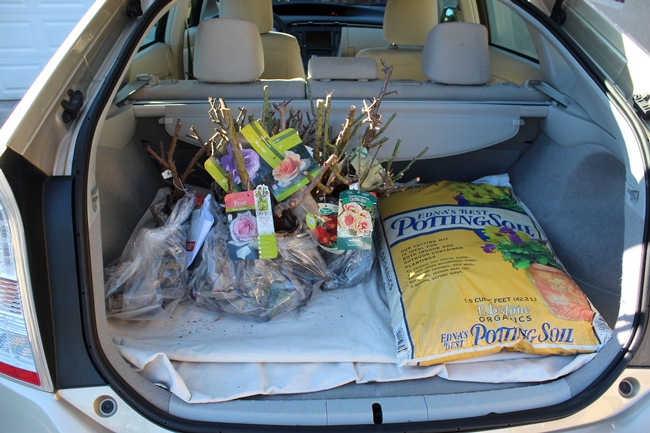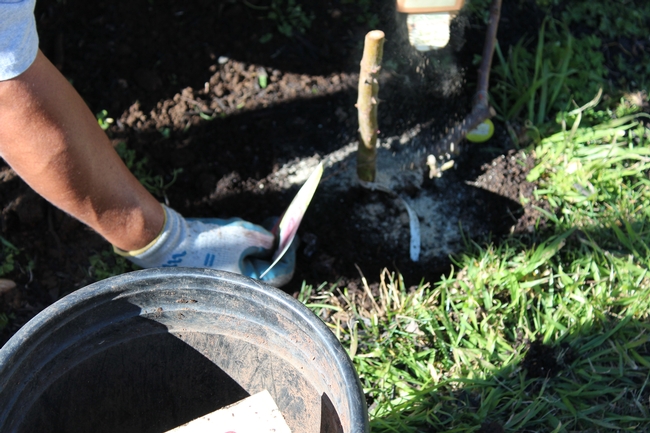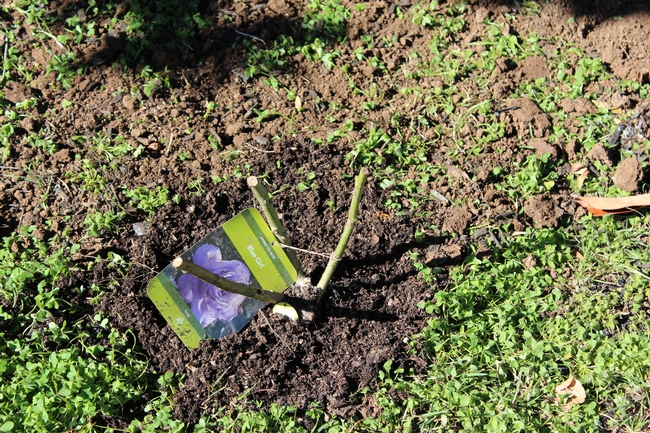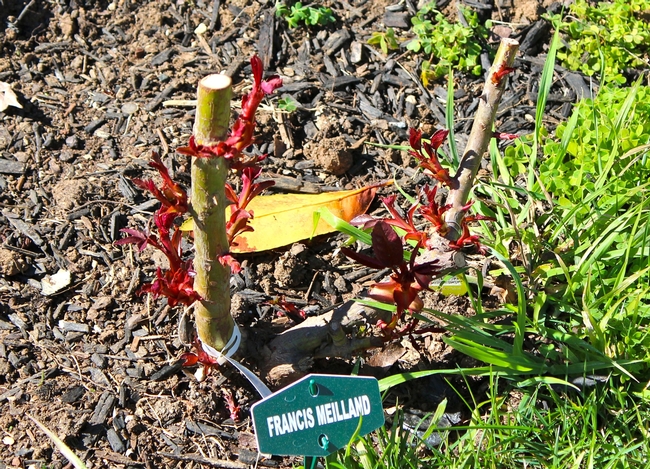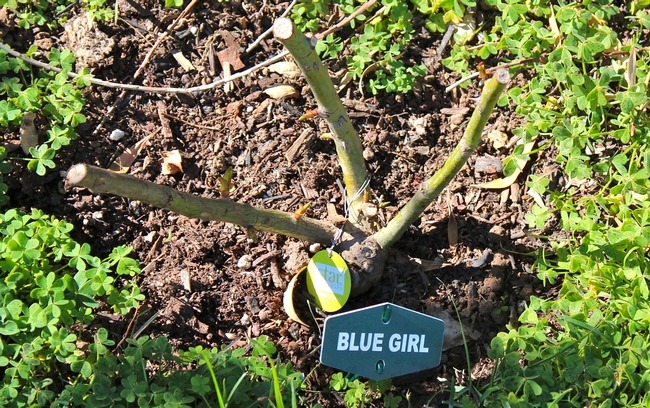March is the last month for planting bare root roses (Rosa), so there is still time if you wanted to do that. We recently moved to a new home with a “blank slate” back yard, and by the end of January, I had 16 of them in the ground.
New garden aside, ordinarily each winter, I make it a point to rejuvenate my rose garden by adding “new blood”: Putting in a handful of newly developed bybrids for the current year, and replacing those that have not done so well with hardier, more disease resistant varieties, which I order from my favorite rose nursery (Garden Valley Ranch in Petaluma). My list included two in the ‘Eyeconic’ series--Rosa ’Eyeconic Melon Lemonade’, and R. ‘Bulls Eye’. Others included R. ‘New Zealand’, and R. ‘Dark Night’ (almost black red on the outer petals and creamy white inside). Plus some old favorites like R. ‘Brandy’, R. ‘Hot Cocoa’, and R. ‘Austrian Copper’. The latter 3 are musts if you are partial to striking orange blends!
And in the spirit of IPM, I try to pick roses which are the most disease resistant, keep them closely monitored, and use cultural methods for control of pests and fungus, as much as possible. One year I had a R. ‘Playboy’ that had such a bad case of rust, I ended up cutting it back, stripping off the leaves, and dousing it with a Neem Oil-based fungicide like Safer. The new growth came in beautifully, and lasted for the rest of the season. I’ve also learned to buy only Grade 1 roses, which are the best quality.
New bare root plants sometimes come bagged in wet sawdust or newspaper to keep the roots moist. Plants should be soaked in water overnight the day before planting, and any damaged canes or roots trimmed off before they go in the ground. Roses love compost-rich soil with a slightly acidic Ph. Once the hole is dug, I make a cone shaped mound inside the hole with potting soil or compost. I then place the fanned out roots on top and backfull the hole with a mix of potting and regular soil. The soil around the filled hole should be gently pressed, forming a shallow basin around the stem, arranging for it to come up about 2 inches above the surface.
For more details, see: ucanr.edu/sites/UC_Master_Gardeners/files/23467.pdf.
Also, check out the Rosa section in the New Sunset Western Garden Book, beginning on page 568, which provides extensive background information, as well as pointers on growing great roses.
Attached Images:
